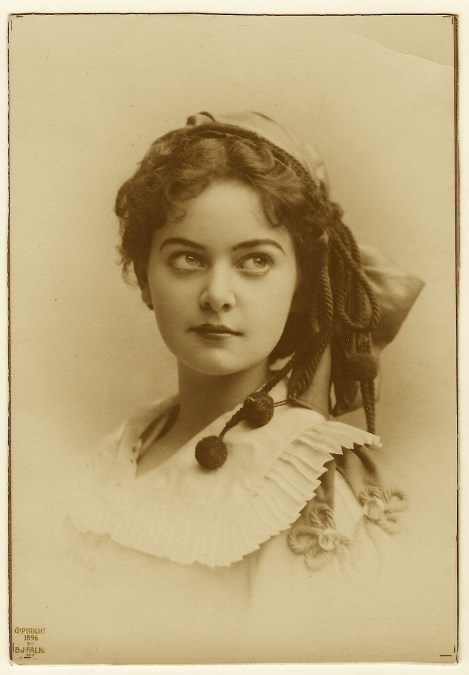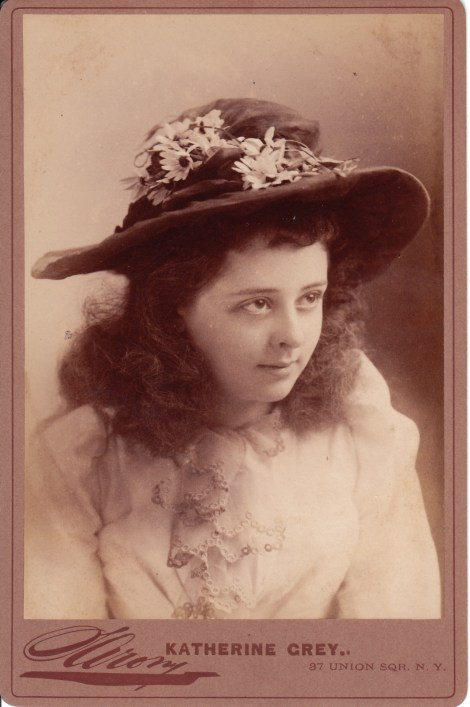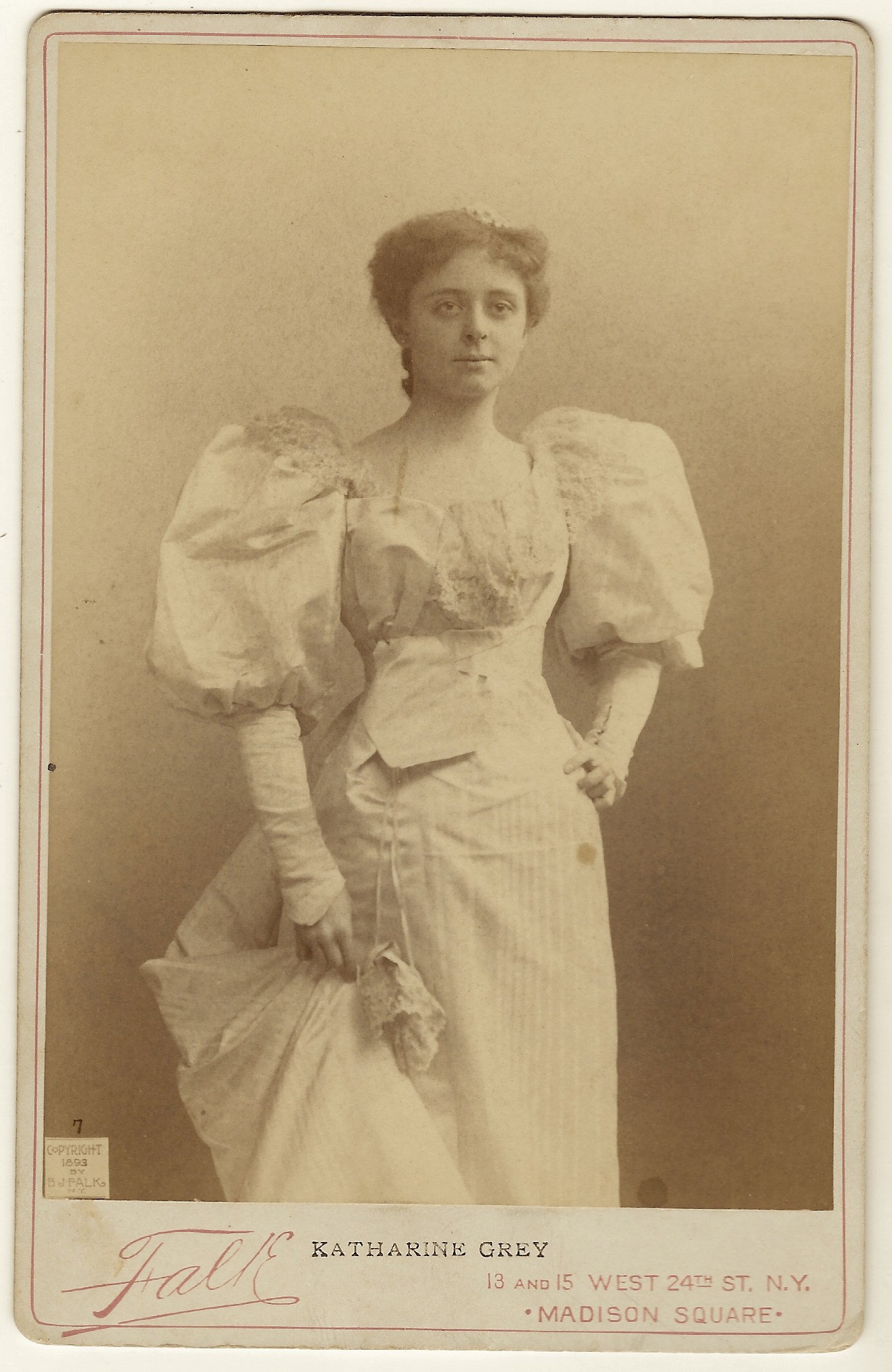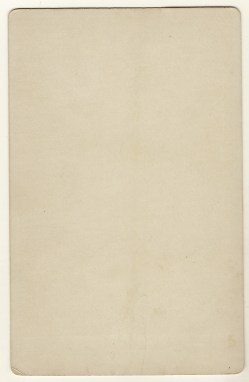 VINTAGE PHOTOGRAPH 1 (SOLD)
VINTAGE PHOTOGRAPH 1 (SOLD)
 VINTAGE PHOTOGRAPH 1 (CLOSE UP) (SOLD)
VINTAGE PHOTOGRAPH 1 (CLOSE UP) (SOLD)
 POSTCARD 2 (SOLD)
POSTCARD 2 (SOLD)
 POSTCARD 3 (SOLD)
POSTCARD 3 (SOLD)
This vintage real photo postcard features theater actress Minnie Ashley (1878-1946). She was one of the great “stage beauties” of the end of the 19th century. She was a talented singer and dancer and she was featured in the madcap musical “1492” (1892). In Boston she performed with the Museum Company and in New York she was a member of the Augustin Daly Company. She had many successes including her performance in “A Country Girl”, “Wang”, and “San Troy”. Her acting resulted in a medical problem. The prolonged exposure to theatrical arc lights caused vision problems. In 1902 she left her acting career and married politician William Astor Chanler who was an affluent grandson of John Jacob Astor. Medical treatment did not help her vision problems and Miss Ashley than put her efforts into sculpting. Chanler and Ashley separated in 1909. She made an attempt at returning to the stage in 1911 but soon opted to pursue her sculpting. During her artistic career she worked under the name of Beatrice Ashley Chanler. In addition to the sculpting, she was active in philanthropy. The book “Famous Prima Donnas” (1900) by Lewis Clinton Strang, devotes a chapter to Minnie Ashley. He describes her as having “artless girlishness, remarkable personal charm, and skill as an imaginative dancer scarcely equalled on the American stage”. He adds that these talents explain her “sudden success” in musical comedy. He describes her dancing as “artistic in every sense” but asserts she was not exceptionally talented in the realm of acting and singing. However, Strang is very complimentary of Ashley’s appearance. He states “nature was indeed good to her when it endowed her with a most fascinating personality, a pretty piquant face, and a slim graceful figure. Vintage Photograph 1 features a young Minnie Ashley. She is a beautiful. Her facial expression is very engaging. The photographer, B. J. Falk was a very well known for his penchant for photographing theatrical stars. He was also recognized for his talent as a celebrity photographer. The image was copyrighted in 1896. this photo measures about 4″ x 5 3/4″. It appears upon very close examination that this image may have been trimmed. Note the imperfection in the top right hand corner. This vintage photograph is in overall good condition (see scans). (SOLD) Postcard 2 was published by the Rotograph Company (New York) and was part of a series (no. B 174). (SOLD) Postcard 3 has the same portrait of Miss Ashley except the image is color tinted. It became common practice around 1902 to hand color photo postcards. Rising labor costs led to the decreasing use of this practice after the 1930’s. This postcard, like the one above it, was produced by the Rotograph Company (New York) and was part of a series (H.B. 14/30). The postcard was mailed and has a 1910 postmark from Warren, Ohio. (SOLD)
 POSTCARD 1
POSTCARD 1
 POSTCARD 2
POSTCARD 2
 PHOTO 1
PHOTO 1 PHOTO 2
PHOTO 2








